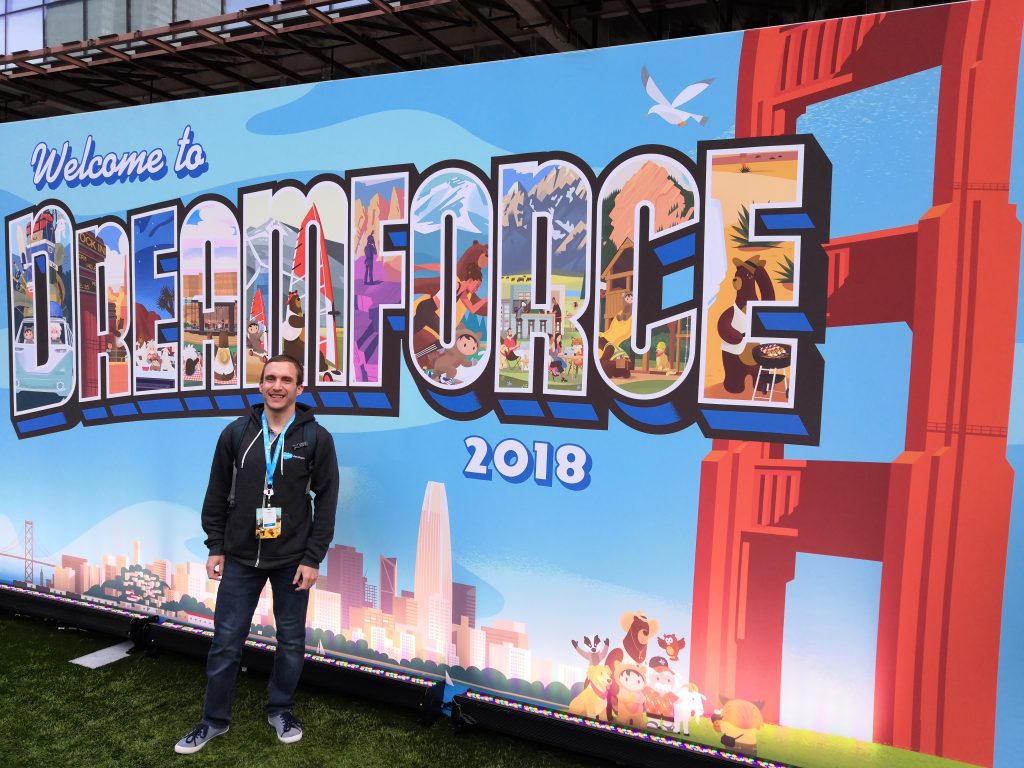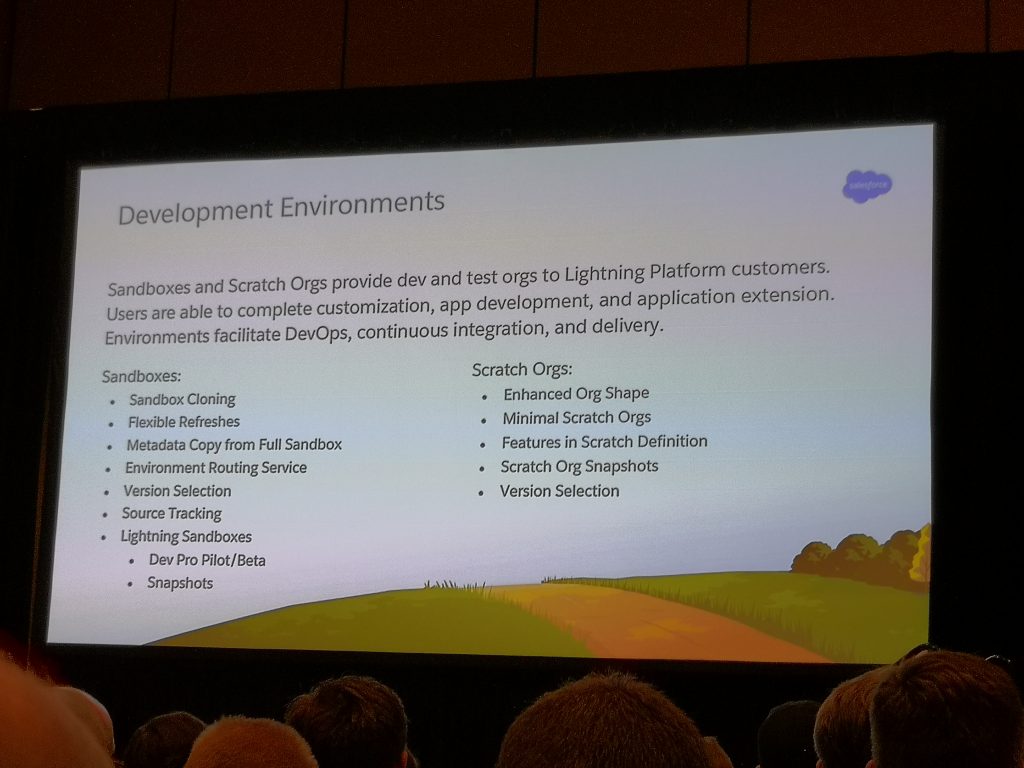This year marked my second Dreamforce conference – the first being in 2016 when I co-presented with Dan Appleman on The Dark Art of CPU Benchmarking. I’ve attended all 3 TrailheaDX conferences as well, so I felt that I was able to take those experiences and successfully navigate my way without getting too stressed or fretting over the small annoyances (especially since I wasn’t presenting this year). Dreamforce 2018 had over 170,000 registered passes – that’s a lot of people!

Dreamforce 2018
ISV Takeaways
Since I work for an ISV (Independent Software Vendor), I went into this Dreamforce looking to find some answers specifically related to managed package development and connecting with other partners. Here are what I consider the top things I learned from an ISV perspective:
- The second-generation of packaging will likely not be Generally Available until next Dreamforce at the earliest. Salesforce is still working through a lot of issues getting this ready and it’s not quite there. For now, we’ll stick with the current packaging process to which we’re accustomed.
- Note: ISV partners should also be wary even when this feature is GA. We typically like to give a new feature a release or two to stabilize, as there are usually always some sort of snags hit. Sometimes it’s best to be patient and keep waiting!
- The Circles of Success for Partners sessions are tremendously helpful. I attended a session and sat at a table with some other partners who all wanted to discuss Salesforce DX and project migration strategies. What I’ve learned: Many ISVs are still struggling to fully switch over to Salesforce DX and we are in dire need of a best practices guide.
- Note: Best practices guide coming soon? https://twitter.com/andyinthecloud/status/1045834682980433920 – I hope so!
The Future Roadmap
As always, there were a number of features and announcements at Dreamforce that aren’t quite ready yet (though many are nearly ready, with the Winter ’19 release). Some of the highlights:

Look at all of those awesome features coming soon!
- Sandbox and scratch org improvements – this is probably something I’m most excited about. One of the issues we have before a new Salesforce major release is actually being able to test on the upcoming version. It can be tricky to obtain an org that is on this latest version, as typically all new developer orgs and scratch orgs are always created on the current released version. In Winter ’19 & beyond, we will now have the ability to shape orgs the way we want them, including the ability to:
- Specify the release version when spinning up new sandbox & scratch orgs
- Utilize scratch org snapshots to include various org settings, setup, installed packages, and data when creating the scratch org
- Create scratch orgs with minimal data
- Salesforce DX improvements – the SFDX CLI continues to see improvements, as well as the VS Code extensions. The biggest news: the VS Code extensions and SFDX now work with sandboxes, too! This means that we can use these new tools for projects that haven’t been converted over to the new SFDX structure.
- A new Idea Exchange! Salesforce has acknowledged that the current Idea Exchange has become outdated – with thousands of ideas out there, and a lack of clear communication and status updates from the Salesforce team, it’s time to try something new. Coming soon, we’ll have a new Idea Exchange with a few key changes:
- A limit of 50 votes per release per user (no more gaming the system!)
- Better insights into where each issue is or is not on the future roadmap
- Our votes actually matter! The top ideas every release will be included in upcoming releases.
- Einstein Voice. I still haven’t used anything Einstein-related yet. I supposed I should at least check out the Trailhead badges?
Other Highlights
There were many other highlights at Dreamforce for me. I think it’s important to try to enjoy all aspects of the conference and San Francisco and not just focus on the development breakout sessions. I was lucky enough to finally spend the weekend in the city and do some exploring before the conference started. Additionally, a group of 20-25 of us all met at 6am on the first day of the conference and ran across the Golden Gate Bridge down to the Embarcadero – an experience that I won’t forget anytime soon.
One other highlight was the March For Our Lives talk that occurred on Thursday evening that was led by two members of MFOL, David Hogg & Matt Deitsch. David was a student at Stoneman Douglas when the mass shooting happened there on February 14th. It was one of the most powerful talks I’ve heard in my lifetime, and I ended the day feeling inspired and motivated to make our country a safer place for all.
Additional Resources
Finally, I’ll end this post by linking to a few resources I discovered while attending Dreamforce. I didn’t know where to fit them in the above sections, so I’ll put them here:
- JSON2Apex – Easily create Apex classes from a JSON example.
- Metadata Coverage Report – A comprehensive list of all Salesforce metadata and where each is supported, as well as any known issues with a particular metadata type.
Did you attend Dreamforce? If so, what were some of your highlights? Let me know in the comments below!
— Robert
